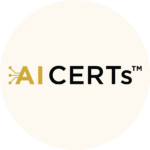
AI CERTS
5 months ago
AI-Powered Education Tools Are Transforming Online Learning Experiences

What We Mean by AI-Powered Education Tools
At their core, AI-Powered Education Tools use machine learning, natural language processing, and adaptive algorithms to tailor content and feedback to each learner. They include chatbots that answer student questions, systems that recommend reading at the right difficulty, and platforms that analyze engagement to suggest interventions.
These platforms are central to the broader trend of AI in Online Learning, which blends pedagogy with data science to improve outcomes. Unlike one-size-fits-all content, these tools adapt as a student progresses and reveal gaps instructors might miss.
How Students Benefit
For learners, the gains are tangible:
- Personalized pathways that match pace and skill.
- Instant feedback on assignments and quizzes.
- Interactive simulations and virtual labs for hands-on practice.
- Accessibility features like automated captioning and multilingual support.
Research shows that personalized learning increases retention and boosts learner confidence. With AI-Powered Education Tools, students get practice exactly where they need it. The result is faster mastery and better engagement in remote and hybrid settings.
Teachers and Institutions: Smarter Support, Not Replacement
Contrary to fear-based headlines, most evidence suggests that AI-Powered Education Tools augment teachers rather than replace them. Educators use analytics dashboards to spot struggling students early. They offload time-consuming grading tasks and focus on mentoring and curriculum design.
Many schools are pairing instruction with professional development. For those who want to deepen classroom AI skills, certifications such as the AI+ Educator™ offer practical training on integrating AI tools responsibly into lesson plans.
Examples from the Field
Several concrete examples show how AI tools are changing online learning:
- An adaptive math platform that changes problem difficulty in real time.
- A writing assistant that highlights argument gaps and citation needs for research essays.
- Virtual tutors that rehearse language conversations with learners using speech recognition.
- Proctoring systems that use behavior analysis to ensure exam integrity while preserving privacy.
These use cases reflect broader AI in Online Learning adoption, where institutions mix human coaching and automated support to scale education without losing quality.
The Tech Behind the Experience
Under the hood, a mix of technologies powers these innovations. Large language models, reinforcement learning, and recommendation engines work together with learning analytics. Efficient deployment matters: models must run in the cloud and, increasingly, on-device to reduce latency and improve privacy.
Engineers and system designers who want to build and optimize these solutions can benefit from courses like the AI+ Developer™ certification, which covers model fine-tuning and production deployment.
Data, Privacy, and Ethics
With great personalization comes great responsibility. AI-Powered Education Tools rely on sensitive student data. Schools must follow strong privacy standards and apply ethical guardrails to handle data fairly. That includes transparency on how models make recommendations and mechanisms for human review.
Ethical frameworks also matter for fairness. Models trained on biased datasets can reproduce inequities. Institutions must audit tools regularly, use diverse datasets, and allow students to opt out or access human feedback.
The Business Case: ROI and Scalability
For universities and training companies, AI-Powered Education Tools often justify their cost by improving retention and completion rates. Personalized pathways decrease dropout rates, corporate upskilling becomes more effective, and institutions can serve more learners with the same teaching staff.
Platform providers are building scalable architectures, combining cloud inference with lightweight edge processing for higher performance. This architecture reduces latency for interactive lessons and improves the learner experience.
Challenges and Practical Limits
Despite the promise, the rollout is uneven. Challenges include:
- Integration with legacy learning management systems (LMS).
- Teacher readiness and resistance to change.
- Ensuring content accuracy and preventing automated plagiarism.
- Balancing automation with pedagogical nuance.
Addressing these requires cross-functional teams. Instructional designers, AI engineers, and policy experts must collaborate. Training programs like the AI+ Learning & Development™ certification help organizational leaders design scalable learning strategies that use AI responsibly.
Student Experience: Voices from Classrooms
Learners report mixed feelings. Many love instant feedback and the tailored pace. Others miss the human touch in nuanced discussions. Successful programs find a balance: use AI for routine tasks and human teachers for mentoring, debate, and deep conceptual work.
Case studies show improved test scores and higher course completion when AI tools are deployed thoughtfully. The key is to view AI as a collaborator that frees educators to teach at a higher level.
What’s Next: The Future of AI in Online Learning
Looking forward, the integration of multimodal AI, immersive VR, and adaptive assessment will deepen. AI-Powered Education Tools will become more context-aware, offering content that adapts not just to skill but to mood and attention. As tools mature, they will also improve in transparency and explainability.
Institutions that invest in infrastructure, teacher training, and ethical governance will lead the transition. For professionals, gaining technical and pedagogical skills will be key to shaping how these tools are used. If you plan to lead that change, consider targeted certifications that combine pedagogy with technology skills.
Conclusion
AI-Powered Education Tools are transforming online learning experiences by combining personalization, scale, and actionable feedback. While challenges remain—especially around privacy and pedagogy—the potential benefits for learners and institutions are compelling. As these tools evolve, human educators will remain central. The smartest systems will be those designed to enhance human teaching, not replace it.
If you want to stay competitive in this shifting landscape, consider formal training and certification. It can help you implement AI tools responsibly and effectively.
If you enjoyed this piece, you’ll love our case study: “Efficient LLMs May Replace Agentic AI, Says Nvidia Researchers”
Ready to build better learning systems? Enroll in the AI+ Developer™, AI+ Educator™, or AI+ Learning & Development™ certification programs at AI CERTs to gain practical skills.



